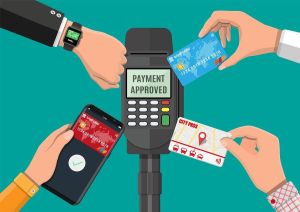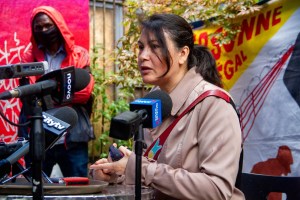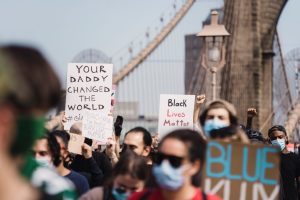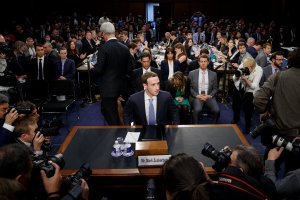Photo by Bernard Hermant on Unsplash
COVID-19 came quickly, as the majority of the world went into lockdown over the course of a few months. Employers and schools had to adapt, and to do so quickly. For the majority of them, it meant moving to online formats. Students and employees across the globe saw their workplaces and classrooms move to their bedrooms, offices, and kitchen tables, as the online world became the new normal. This quick switch created a strong reliance on video-conferencing mediums and applications, such as Zoom, which saw an EPS growth ranging from 275% to 800% over the last three quarters. For context, over the last eight quarterly reports, Zoom has shown revenue gains between 78% and 182%.
Conducting our lives online has become almost a normal at this point, and serves to prove that the Internet is essential in promoting public safety, education, and awareness. In 2016, the United Nations advised states to work towards universal Internet access, while also revising the Universal Declaration of Human Rights to include a statement advocating for “the promotion, protection and enjoyment of human rights on the Internet”. While this does take important steps towards protecting the rights of Internet users, it fails to acknowledge that modern technology has made the Internet indispensable. At this point in time, it is near impossible to avoid the Internet; at some point or another, it becomes necessary for human life. There are nearly 4 billion email users worldwide. Search engines have become essential from job-searching, to research, to answering everyday questions . It’s no doubt that the Internet is part of almost everyone’s everyday life.
Yet, the invention of the Internet has also formed a stronger class chasm, known as the 21st century “digital divide”. The concept of the “digital divide” rests on the notion that there is a growing gap between “the underprivileged members of society, especially the poor, rural, elderly, and handicapped portion of the population who do not have access to computers or the Internet; and the wealthy, middle-class, and young [people] living in urban and suburban areas who have access”. This “divide” has drastic consequences for those who are on the wrong side, putting them at a substantial disadvantage when it comes to job-hunting, school work and communication with family. Since COVID-19 closed down public spaces across the world, this divide has only worsened.
In Toronto, Canada’s largest city, public libraries and schools are often the only source of Internet access for low-income and homeless Torontonians. As these spaces closed and school moved to online formats, Internet access became necessary for students. Low-income students saw the digital divide worsen, and the government was forced to develop effective solutions. The mayor of Toronto, John Tory, announced in late April that twenty five large residential buildings in low income neighbourhoods would be receiving free Internet for a year. Ten long-term care homes in the city have also received free Wi-Fi access, while four permanent shelters and five temporary shelters will be receiving Wi-Fi access for three months, courtesy of Rogers. On top of that, students across Ontario without access to personal devices would be provided with iPads for the duration of the school year, with 21,000 iPads being deployed by school boards.
Not only did these initiatives improve the lives of students, but they also gave families and low-income residents access to life-saving information. COVID-19 has changed the world as we know it, and updates are made on a day-to-day basis. By providing free access to the Internet, people across the world are able to gain information on government procedures, safety measures, emergency income support and make virtual connections with at-risk loved ones.
The digital divide is a worldwide problem, and when combined with a pandemic, puts the lives of billions without access at risk. The 2017-18 National Sample Survey reported only 23.8 percent of Indian households had Internet access. Teachers at the Study Hall Educational Foundation (SHEF) in India quickly adapted to the new learning environment, reaching out to students by all means possible when the pandemic hit and closed down schools, connecting with 70% of their students. They connected with 70% of students, eventually developing an e-flyer with government relief measures, testing centres, and helplines, to effectively dispel misinformation and mass panic within households. While this initiative was effective in promoting important information, 30% of students were still unable to be reached. The COVID-19 pandemic has demonstrated the importance of communication between governments and its citizens, however without access to the Internet, much of this information is near impossible to find.
In 2018, the UN Broadband Commission for Sustainable Development released a target that promotes affordable Internet as 2% of monthly income for one gigabyte of data. However this target is still unaffordable for many people in developing countries. In South Africa, only the wealthiest 20% of people can afford basic access at this price. Those in the poorest 60% of the population find basic access costing between 6% and 21% of their monthly income.
Investment into universal access to the Internet doesn’t just increase the reach of broadband, but it represents a stronger commitment to education, communication, and human rights worldwide. Universal Internet access is essential to achieving the 2030 targets for the Sustainable Development Goals, with specifically beneficial impacts on goals that promote the development of infrastructure, economies and sustainable communities (goals 8 through 11). An investment in accessible Internet creates a commitment to building stronger communities that prioritize education and sustainable development.
COVID-19 has changed the way we view the Internet. As almost every aspect of life moved online, we now see the Internet as a utility akin to water and electricity, as modern life is nearly impossible without it. The investment in free Internet has promoted the distribution of essential information that has benefited thousands of lives, and demonstrates the power of the Internet. As half of the world continues to live without steady access to broadband connection, their ability to access education, financial services, political engagement, and free expression is extremely limited. If we continue to view access as a luxury, corporations can continue to exploit consumers in the name of profit, and will continue to argue against the promotion of the free and fair distribution process known as net neutrality. Human rights on the Internet cannot be preserved when the Internet is inaccessible to most of the world.
When we invest in the Internet, we invest in a sustainable future. COVID-19 has only proved how the Internet can save lives. By taking what we have learned through our experiences learning and working in the online world, we can work towards establishing a process in which Internet access is viewed as a utility that shouldn’t be exploited, and bridge the digital divide.











